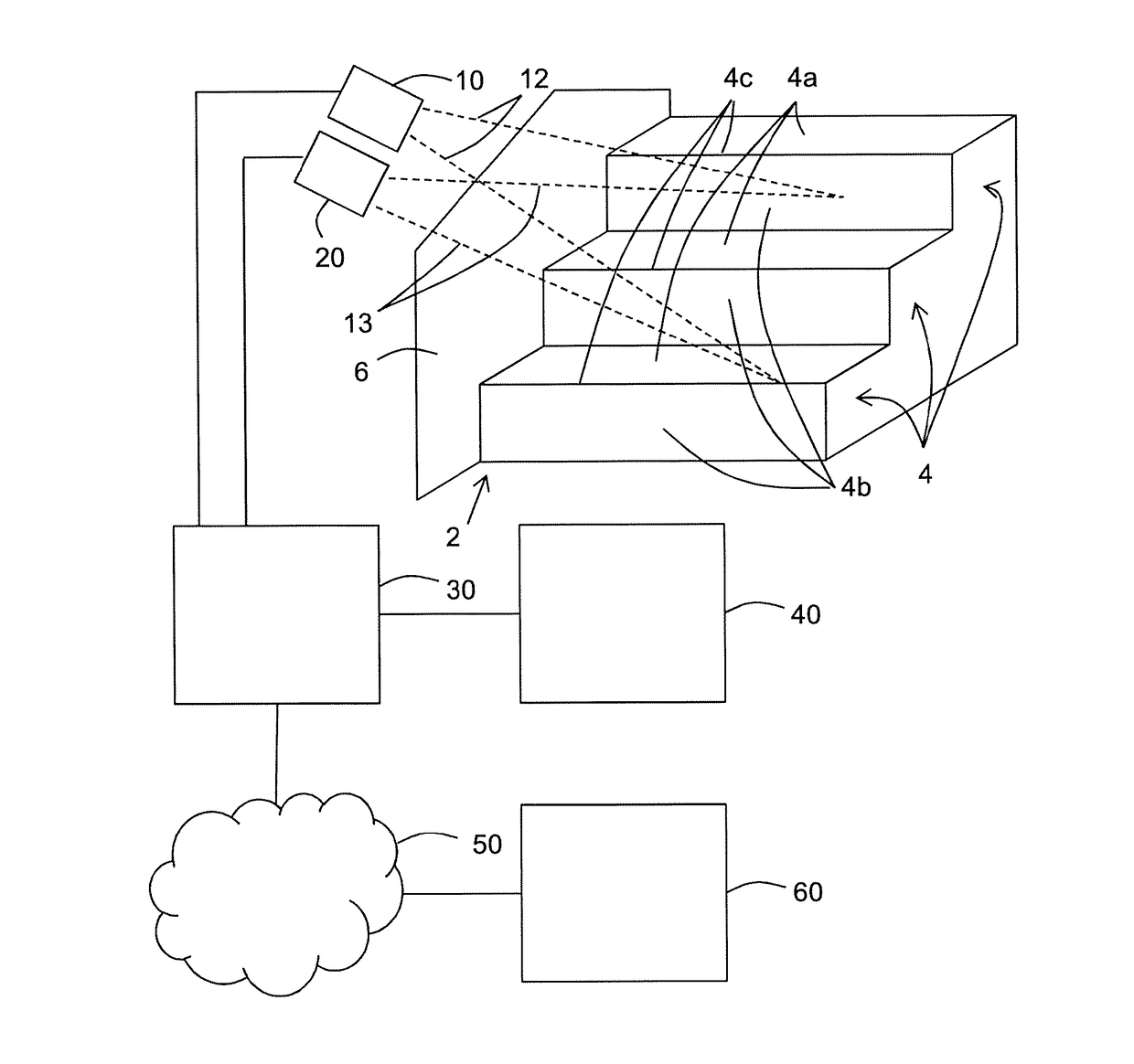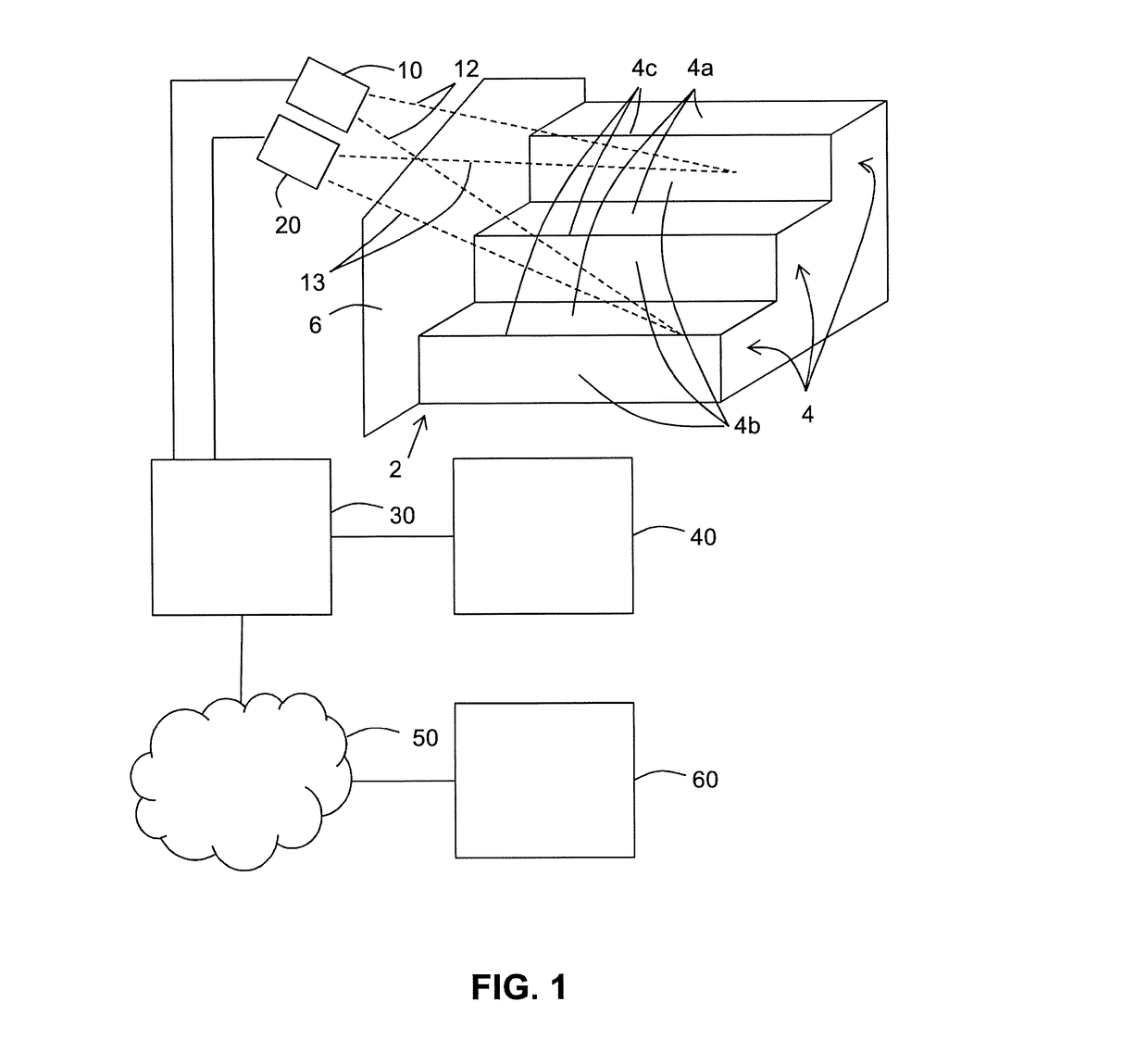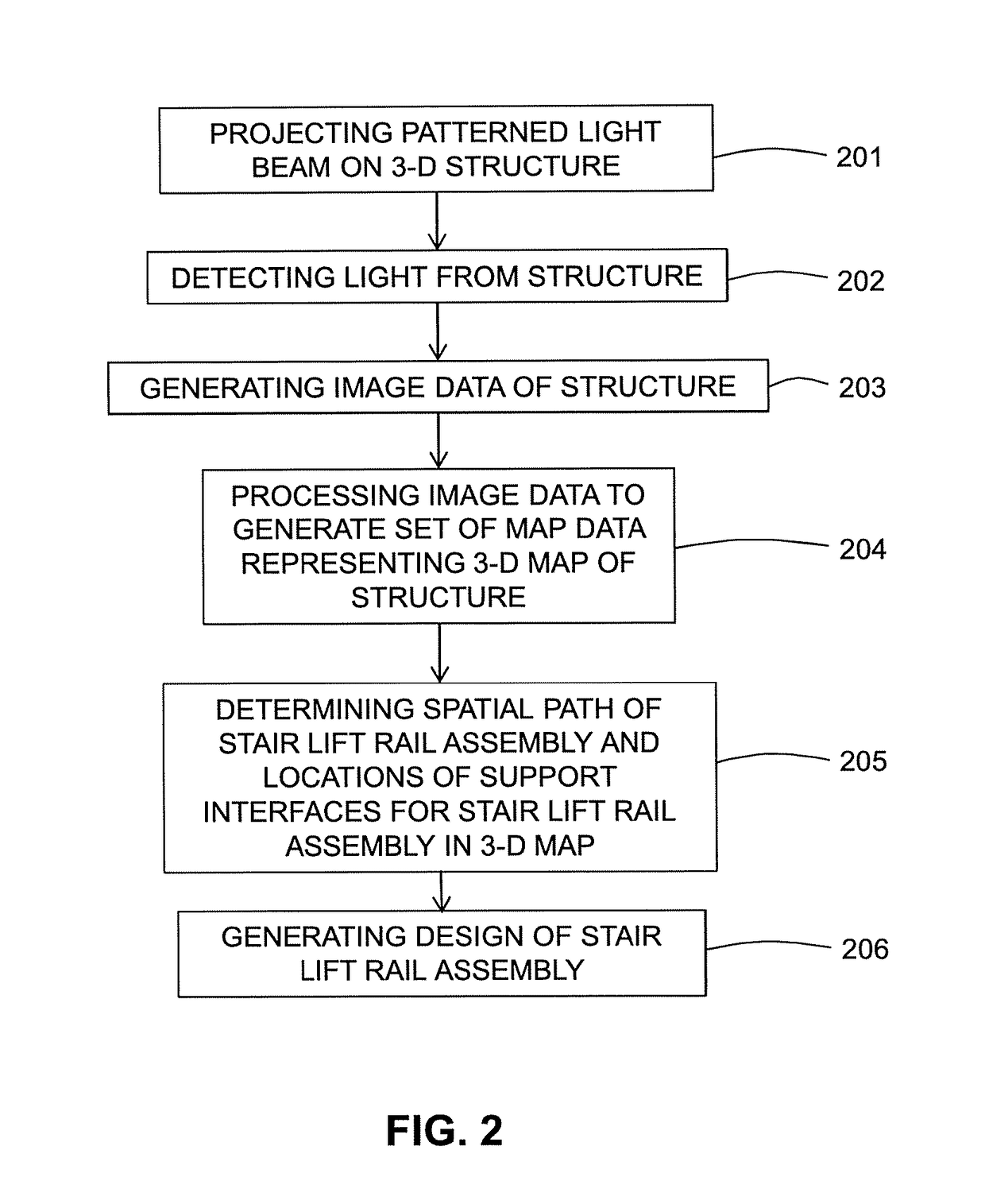[0007]It would be desirable to provide an alternative to the use of markers to acquire an accurate three-dimensional representation of the staircase and its environment. It would also be desirable to decrease the time to measure an actual staircase.
[0015]In the method of the invention, the use of markers can be prevented or omitted. Rather, an optically patterned light beam is used to extract depth information from a three-dimensional structure, which depth information includes a distance between the reference location and a part of the structure. The depth information allows to create a set of map data representing a three-dimensional map of said part of the structure.
[0020]In practice, a three-dimensional structure may have dimensions in one or more directions, or shapes, that are such as to prevent the structure from being captured as a whole by projecting a light beam towards it. For example, the transverse extension of the light beam allows projecting it only on part of a three-dimensional structure. As another example, the light beam could be projected on the whole of the three-dimensional structure, but this would require such a large distance between the reference location and the structure that an accuracy of image data and / or map data would be unacceptably low. As still another example, the structure can have different parts that are only visible from different reference locations. In all of these and other cases, it is necessary to generate different sets of map data for different (surface) parts of the structure. The different sets of map data may be produced using the same reference location, or they may be produced using different reference locations. By data-stitching or correlating the different sets of map data with each other, an extended set of map data is provided. The extended set of map data represents a three-dimensional map of a combination of the different parts of the structure. The different (surface) parts of the structure may partly overlap, thereby facilitating the correlation process.
[0030]The set of map data comprises quantization errors, which may complicate an identification of steps of the stairs and / or a wall adjacent to the stairs and / or a railing structure adjacent to the stairs, and which may complicate determining a location of a support interface. Quantization errors, which may be due to the digitalization processes used in the method and system of the present invention, induce local variations in surface and line properties in the three-dimensional map, showing them to be irregular while in reality such surfaces and lines are flat and straight, respectively. To alleviate this problem, in some embodiments of the method, the step of identifying a series of steps comprises determining a plurality of points associated with a top face of the step in the set of map data, fitting a top plane to the plurality of points associated with the top face, and redefining the top plane as the top face in the set of map data. In some embodiments of the method, the step of identifying a series of steps comprises determining a plurality of points associated with the front face of the step in the set of map data, fitting a front plane to the plurality of points associated with the front face, and redefining the front plane as the front face in the set of map data. In some embodiments of the method, the step of identifying a series of steps comprises determining a plurality of points associated with the nose of the step in the set of map data, fitting a nose line to the plurality of points associated with the nose, and redefining the nose line as the nose in the set of map data. In some embodiments of the method, the step of identifying a wall, floor or ceiling adjacent to the stairs comprises determining a plurality of points associated with the wall, floor or ceiling in the set of map data, fitting one or more geometrical surfaces to the plurality of points associated with the wall, floor or ceiling, and redefining the one or more geometrical surfaces as the wall, floor or ceiling in the set of map data. In some embodiments of the method, the step of identifying a railing structure adjacent to the stairs comprises determining a plurality of points associated with the railing structure in the set of map data, fitting one or more geometrical surfaces to the plurality of points associated with the railing structure, and redefining the one or more geometrical surfaces as the railing structure in the set of map data. In such enhanced set of map data, an accuracy of locating support interfaces on the three-dimensional structure is improved by inclusion of the top plane, the front plane, the nose line, and the one or more geometrical surfaces, respectively.
 Login to view more
Login to view more  Login to view more
Login to view more 


